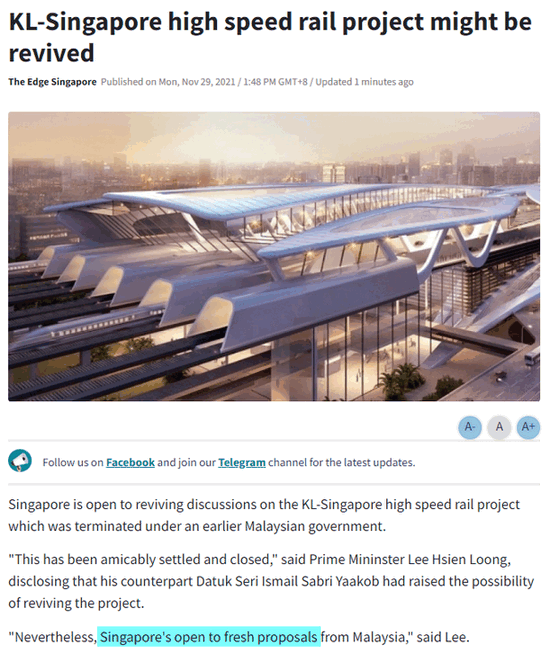Search the Community
Showing results for tags 'Singapore'.
-
Personally, the mindset of the national is if it is FREE we will keep it hence, i dont envisage a possible reduction in our NS duration what i am very worried about is the world is moving so very fast we already had been disadvantaged by NS, resulting in being 2 or 2 1/2 years behind our girls and our foreign classmates in the future it will be worse for our children even 6 months can mean a break or score the economic cycle also is shorter hence, i am just worried about our children am i worrying too much for our kids or should i just relax TAIPEI
-
Hey guys, any1 knows which marathon is in Feb - April 2011 which has the 10km distance? Cos i planning to train for marathon but i dun wan to go straight for the 42km, i prefer to gradually increase the distance..so im hoping to run 10km beginning of next yr..den 21km at adidas sundown in May..den eventually the StanChart 42km in Dec next yr. Any advice? Thanx in advance.
-
I'm beginning this thread so I can continue to discuss matters on a topic that interests me. I know there is a thread with similar content, but it's become a bit toxic, so if the mods don't mind, I'll start one here? Otherwise go ahead and merge. Basically we have an economic crisis on us, and internationally things are not doing well either. But in spite of this, property prices seem to be headed northwards and the agents will want to tell you, they won't drop. But job losses are on the way, and the capital appreciation on property isn't what it used to be and despite what agents try to tout, one must consider all factors rationally, and see if your money is better served elsewhere. Eg a good benchmark will be the 2.5% that CPF offers. But property remains enticing because it takes a lot more effort and investigation to find alternatives and not all Singaporeans are that hardworking or familiar with the investment instruments available. I wonder what the rest think? Cheers
-
Has anybody feel that yesterday(Mon 8-Dec-2008) was indeed very cold? From my flat i have to wear sweater in the morning, i am jsut wondering whether it was below the official announced 24 deg C, anyone felt the same?
-
Starting a thread to consolidate the sharing of SIM-only plan experiences and lobangs. Still 1 month+ left on my current M1 SIM-only contract and looking at what other players (telco and MVNO) are offering. Came across Zero1's 6u plan which seems pretty competitive, so putting this plan on my radar screen.
-
SINGAPORE – High certificate of entitlement prices are not quelling motor dealers’ appetite to grow their portfolios. Premium Automobiles, the retail dealer for Audi, has just been appointed the distributor for Zeekr, a luxury electric vehicle (EV) brand from Chinese automotive giant Geely. The agreement was signed in late December. The showroom for the brand will be built in the Leng Kee Road area in the first half of the year, Premium Automobiles said in a statement sent to The Straits Times late on Dec 28. The service facility will be in the Ubi industrial area. When asked, Premium Automobiles said the details are still being finalised for their exact locations, but added that these will be dedicated facilities that will not be shared with Audi cars, which the company will continue to sell. Zeekr will be launched here with two models – 009, which is a multipurpose vehicle (MPV), and X, a sports utility vehicle (SUV). Deliveries will begin in the third quarter of 2024. The 009 MPV is over 5.2m long, which makes the six-seater bigger than the latest generation Toyota Alphard, which measures just under 5m. Premium Automobiles did not confirm the exact specifications of the models, but the 009 MPV has a promised range of 800km on a full charge. Its dual motor set-up offers maximum power of 400 kilowatts, enabling it to sprint from 0kmh to 100kmh in 4.5 seconds, and making it the world’s fastest MPV. The X SUV is about the same size as the Nissan Qashqai at 4.4m long. Two versions are offered in the other markets where Zeekr is already operating. One has a 200kW motor that powers the rear wheels and boasts a range of up to 440km and the other is a zippier 315kW dual-motor all-wheel-drive version that can cover 400km on a single charge. Singapore, Hong Kong and Macau will be the first places where Zeekr right-hand drive cars are available. https://www.straitstimes.com/singapore/transport/chinese-ev-maker-zeekr-s-cars-to-be-sold-in-singapore-with-deliveries-from-q3-2024
-
New species of bug discovered, named after Singapore Dr Hwang Wei Song, Senior Curator of Insecta at the Lee Kong Chian Natural History Museum, said naming this mirid species was a timely tribute as the country celebrates SG60.
-
I decided to create a separate thread for AI. Things are really rapidly changing. AI to replace sales staff that are in a revolving door situation. Seems like this company has hit upon a niche that larger companies are very interested in. Not all of these ideas will work out. But you can bet a significant portion of desk/admin jobs will slowly be redundant over the next 10-15 years. Maybe by then, some of us would be working alongside AIs to do some of the routine tasks. https://techcrunch.com/2017/04/09/saleswhale-seed-funding/
- 552 replies
-
- 2
-

-
- artificial intelligence
- singapore
-
(and 3 more)
Tagged with:
-
lai liao 😁 @ https://www.techinasia.com/source-tesla-nears-final-approval-sell-cars-singapore
-
VW Singapore plots Skoda comeback Volkswagen-owned Czech brand Skoda is making a comeback, yet again. But this time, it is parent group Volkswagen which will do its own importing and retailing here. Volkswagen Group Singapore - the manufacturer-owned importer and retailer of Volkswagen vehicles here - has registered a new company for this purpose. According to the Accounting and Corporate Regulatory Authority, Skoda Centre Singapore was registered last month and will be operating out of 247 Alexandra Road, which is the same address as the VW showroom. The Straits Times understands renovations are being carried out at the facility and that Skoda Centre Singapore will start operations in the first quarter of next year. Volkswagen Group Singapore was not available for comment, but it is understood that a meaningful price differential will be in place to re-launch the Czech brand here. Previously, Skoda cars - which are based on Volkswagens - were the same price or even costlier than equivalent VW models. In other markets, Skodas are cheaper. The brand was last represented by Harvest Automobiles, part of businessman Peter Kwee's now dormant motor group of companies. Harvest Automobiles went bust in 2013 - the third Skoda agency to have failed in Singapore. The Straits Times understands Vertex Automobiles, the dealer for Chinese automobile brand Chery that is owned by egg trader Lian Fong, had made a pitch for the Skoda franchise. But it has since landed Seat, a Spanish brand also owned by Volkswagen Group. Skoda had also been courting Trans Eurokars, a multi-franchise group owned by businessman Karsono Kwee. Among its brands are Rolls-Royce, Porsche, Mini and Mazda. The best year for the Skoda brand here was 2010, when it sold 105 cars. That is less than 4 per cent of Volkswagen sales last year. Will the brand have better success under Volkswagen? Nanyang Business School's Adjunct Associate Professor Zafar Momin, previously an automotive expert with the Boston Consulting Group, said: "Skoda may be able to make a comeback in Singapore if priced and promoted properly. It needs to be very competitive with its Korean competitors in terms of pricing, as it could provide solid, competitive products targeted at value segments of the markets. "With VW Singapore now doing it themselves, it has a better chance than before. Having said that, I wonder what "comeback" really means in a small crowded Singapore car market which has small volumes for many non-mainstream brands. Would it really be worth the effort and to what extent would it cannibalise VW products?" When contacted back in 2014 - when Harvest Automobiles relinquished the business - Volkswagen Group Singapore said it had no plans to take over the Skoda retail business here. It has, however, taken over the maintenance and warranty of Skodas here. There are about 400 Skoda cars in Singapore today. As a onwer of both Skoda and VW model, I can attest that Skoda is indeed better, in almost every aspect, than VW. I can wait to welcome it back to Singapore!! Here are some interesting models in current Skoda lineup, that I hope can be made available to local motorist when sales start next year. Superb Superb Combi Kodiaq
-
Source: https://mothership.sg/2025/03/johor-1-5-billion-reservoirs-water-treatment-plants/ Malaysia will be injecting more than RM5 billion (S$1.5 billion) to construct three reservoirs and three water treatment plants in Johor Bahru, as the state aims to cut its reliance on treated water imports from Singapore by 2030. The three reservoirs will be built along Sungai Johor, Sungai Pontian Besar, and Sungai Sedili Besar, with a projected combined cost of more than RM1.6 billion (S$482 million), New Straits Times reported. The three water treatment plants, which will expand Johor's treated water supply by 41 per cent to 3,061 MLD per day, will cost about RM3.5 billion (S$1 billion). The three reservoirs will be funded by the federal Malaysian government, while the three water treatment plants will be funded by the Johor state government through water operator Ranhill SAJ. Zero Dependency Project The two projects are an important part of Malaysia's Zero Dependency Project, which aims to reduce the country's reliance on treated water from Singapore after 2030, said Johor's Public Works, Transport, Infrastructure, and Communications Committee chairman Mohamad Fazli Mohamad Salleh. The new reservoirs will meet the increasing demand from the population and industries, with the immediate focus on supporting the growth of industries in the Johor-Singapore Special Economic Zone (JS-SEZ). Johor currently imports about 16 million gallons of treated water daily from Singapore, substantially more than the 5 million gallons daily required under the 1962 Johor River Water Agreement. Malaysia’s Deputy Energy Transition and Water Transformation Minister Akmal Nasrullah Mohd Nasir said on Dec 2, 2024 that treating the same amount of water locally would cost about RM1.80 (S$0.54) per cubic metre, while Singapore's treated water costs about RM0.11 (S$0.03) per cubic metre. Achieve self-sufficiency While there are benefits in continuing to purchase treated water from Singapore, Johor is determined to achieve self-sufficiency, especially as industrial demand grows. Johor has already given approval for 17 new data centres, which will need about 59.06 million litres of treated water daily. According to The Straits Times, this would account for 2.7 per cent of Johor's total treated water capacity. Johor Investment and Consumer Affairs Committee chairman Lee Ting Han said that by 2030, the state could host up to 30 data centres, highlighting the need for a sustainable water strategy. Townships such as Iskandar Puteri, Kulai, and Tanjung Langsat Industrial Hub are undergoing massive development, each requiring a major water supply. Johor plans to increase the state's water reserve margin by 10 to 15 per cent to support growth and address potential emergencies.
-
It is not about Singapore (human) population but still a piece of good news. The efforts of our zoological team pay dividends. And 998 is quite an auspicious number too. 🙃 Bountiful baby year: S’pore wildlife parks welcomed close to 1,000 newborns in 2024 Source: https://www.straitstimes.com/singapore/bountiful-baby-year-spore-wildlife-parks-welcome-close-to-1000-newborns-in-2024 It was a huge bundle of joy for Mandai Wildlife Reserve in 2024 as it welcomed 998 baby animals across its parks. The bumper births surpassed 2023’s 970 newborns, which was then the highest number of babies the wildlife parks have collectively produced since 2013. Among the new additions are 34 species listed as threatened under the International Union for the Conservation of Nature’s Red List of Threatened Species, Mandai Wildlife Group (MWG) said on March 27. Singapore Zoo One of them was Putri, a proboscis monkey whose wild populations are declining due to habitat loss from deforestation for timber and oil palm plantations. Putri, whose name means “princess” in the Malay and Indonesian languages, is the second offspring to parents Malaka and Jeff. She can often be seen playing with her brother Bayu or clinging to her mother at the proboscis monkey habitat. Of the 143 species that gave birth in 2024, 23 are part of internationally managed breeding programmes such as the European Association of Zoos and Aquaria’s Ex-situ Programme. The arrival of five slender-tailed meerkat pups – the twins residing at the Great Rift Valley of Ethiopia and the triplets at Wild Africa – marks the first births of the species since 2019, said MWG. Adding to the list of crowd charmers is a female Linne’s two-toed sloth named Hope and three oriental small-clawed otters. Another highlight was the arrival of two Goeldi’s monkeys – the first infants in nine years – along with four ring-tailed lemurs and two emperor tamarins. In the realm of reptiles and amphibians, the endangered golden mantella and black-legged poison frog were among the key breeding successes, said MWG. “These species require highly specific water conditions for reproduction, and the animal care team achieved a breakthrough by studying and fine-tuning optimal water parameters,” it said, adding that the team also simulated natural seasonal changes, such as adjusting temperatures and humidity, to improve breeding success. “In a crucial step, eggs were carefully retrieved for assisted hatching, to maximise chances of survival.” The efforts put in led to a total of 31 golden mantella hatchlings, which was the highest in three years. According to MWG, another of its key breeding efforts focused on the Chrisangi leaf insect, a species native to Singapore, to prevent extinction and support conservation efforts. Night Safari A bounty of fawns were also birthed at Night Safari in 2024. Among the additions were three Malayan sambar deer, five barasinghas, and a male hog deer. The arrival of three Turkmenian markhor kids also marked a milestone as the first offspring for the species in five years. Markhors, with their wide hooves, are perfectly adapted to the rocky, mountainous terrains that they inhabit in the wild. MWG also welcomed a male woylie, the fifth joey born at Night Safari since 2021, at the Tasmanian Devil Trail. The joey, which initially stayed close to its mother after birth, is now growing bolder, curiously exploring its habitat and engaging in enrichment activities. River Wonders At River Wonders, it welcomed two special additions – a giant anteater pup and a West Indian manatee calf. Solana, the fifth pup born to Zapata and Iapura, has transitioned to a solid diet of ant eggs and boiled eggs. As she continues to get used to the presence of keepers, the playful young one often climbs onto its mother’s back for comfort. Meanwhile, the shy West Indian manatee calf at the Amazon Flooded Forest has formed a friendship with a young female born in 2023. The two can often be seen grazing together. The latest calf, like her buddy, was bottle-fed by the aquarists and tended to round the clock as no nursing behaviour was observed from its mother. The endangered Lake Titicaca frog was also successfully bred by River Wonders in the same year it was first exhibited. The blue discus, a tropical fish native to South America, continues to thrive with 80 new members joining the school. Bird Paradise High conservation value species like the golden parakeet and yellow-mantled chattering lory were born in Bird Paradise in 2024. To ensure their survival, eggs that were neglected or abandoned in the aviaries were safely retrieved and incubated at its breeding and research centre. According to MWG, newly hatched chicks are placed in a specially controlled environment. The chicks will be hand-raised and gradually exposed to fluctuations in temperature and humidity, preparing them for release to the aviaries. Other notable baby birds included first-time hatchings for MWG, such as the blue-winged leafbird, Madagascar teal and Meller’s duck as well as the first Nyasa lovebird and green honeycreeper hatchlings in over seven years. They also celebrated its first-ever penguin hatchlings with two gentoo penguin chicks born to first-time parents Riki and Peach, and one to parents Citrus and Enzo.
-
Difficulty hiring even when offer is $18 per hour I wonder how much of that offer goes to the employment agency
-
Heh, similar situation here too but our authority may be too busy with the in-depth monitoring until no time to take actions in protecting our consumers. Or was the price increases due to many other factors, which make it very complicated, requiring many man-YEARS to calculate? Hahahaha I used to point out some of the offer advertisement to the respective supermarket, where was price was lower than the offer price, and the standard answer are either "Sorry, it is a typo", "The price actually increase quite sometime ago and now it is on offer, so a good time to stock up", etc. Australia supermarkets Coles, Woolworths sued by regulator for misleading discounts Source: https://www.straitstimes.com/business/coles-woolworths-sued-by-regulator-for-misleading-discounts SYDNEY – Coles Group and Woolworths Group, Australia’s two biggest supermarket chains, have been sued by the country’s competition regulator over claims they misled shoppers over discounting claims on hundreds of common products. The Australian Competition and Consumer Commission (ACCC) alleged the companies briefly inflated prices on popular items such as Coca-Cola, Tim Tams biscuits and Colgate toothpaste before reducing them to the same or slightly higher than the original price. “The discounts were, in fact, illusory,” ACCC chairwoman Gina Cass-Gottlieb said in a statement on Sept 23. “Many consumers rely on discounts to help their grocery budgets stretch further, particularly during this time of cost-of-living pressures. It is critical that Australian consumers are able to rely on the accuracy of pricing and discount claims,” she said. Australia has one of the world’s most concentrated supermarket sectors, with Woolworths and Coles controlling just over half of the market, according to Bloomberg Intelligence. Both chains have come under political fire during the cost-of-living pressures sparked by stubbornly high inflation, with the government in June introducing larger fines for anti-competitive behaviour. “These are serious allegations that the ACCC is bringing before the courts,” Australian Prime Minister Anthony Albanese said on Sept 23. “If this is found to be true, it’s completely unacceptable. Customers don’t deserve to be treated as fools by the supermarkets.” The ACCC has been taking a tougher stance on protecting Australian consumers, who must contend with duopolies or oligopolies in many industries, including air travel, banking and telecommunications. The competition regulator alleges Woolworths made false or misleading representations about the prices of 266 products between September 2021 and May 2023, while Coles made false or misleading representations about the prices of 245 goods during February 2022 and May 2023. Ms Cass-Gottlieb said the allegations were “very serious”, and that the ACCC is worried both about the harm to consumers and the harm to competition by fake discounts. The allegations come as the ACCC undertakes a broader analysis of the supermarket sector. Ms Cass-Gottlieb added that the commission is looking in depth at competition, cost, pricing and margins. “We encourage genuine discounts – they matter to consumers,” she told reporters on Sept 23. “But they need to be genuine.” In one example cited, from at least Jan 1, 2021, until Nov 27, 2022, Woolworths offered Oreo Family Pack Original cookies for for a regular price of A$3.50 for at least 696 days. On Nov 28, 2022, the price was increased to A$5 for 22 days. On Dec 20, 2022, the cookies were placed on a “Prices Dropped” promotion at a new price of A$4.50 and a “was” price of A$5. The “Prices Dropped” price of A$4.50 was in fact 29 per cent higher than the previous regular price, the regulator said. The regulator also alleged that in many cases both companies “had already planned to later place the products on a ‘Prices Dropped’... promotion before the price spike, and implemented the temporary price spike for the purpose of establishing a higher ‘was’ price”, Ms Cass-Gottlieb said. BLOOMBERG
- 58 replies
-
- 12
-

-
.png)
-
- case
- misleading
-
(and 6 more)
Tagged with:
-
hopefully in 2022 can create a NEW thread liao .... UM$NO govt is the BEST .... still can whack JE property?
- 63 replies
-
- 3
-
.png)
-
- hsr
- high speed railway
-
(and 2 more)
Tagged with:
-
http://www.plushasia.com/media_photo/23275 Singapore's million-dollar club grows Singapore - More people made it to the millionaires club last year, with 4,220 taxpayers having assessable income of more than $1 million each. Their combined income came to $8.06 billion, according to the annual report of the Inland Revenue Authority of Singapore (Iras) released on Thursday. They forked out $1.49 billion in income tax. In 2011, in comparison, there were 3,870 people in this group and they earned $7.45 billion. These could be Singaporeans, permanent residents or foreigners. A further 12,921 people earned between $500,000 and $1 million each last year, up from 11,092 people in 2011. Iras collected 7.6 per cent more cash in its latest financial year, as the economy grew moderately and the buoyant property market yielded more in stamp duty collection. Total taxes collected came to $41.4 billion for the 12 months to March 31, up from $38.4 billion in the year before, said The money made up 74.1 per cent of all operating revenue for the Government. The remainder was collected by other agencies for other types of payments - such as certificates of entitlement and Electronic Road Pricing. Iras' collections include corporate taxes, individual income taxes, goods and services tax (GST), stamp duties, property tax and betting taxes. For the financial year, corporate income tax grew 5.8 per cent to $12.8 billion, owing to improved company profits. Individual income tax collection grew by 12.2 per cent to $7.7 billion, due to higher salaries and the cessation of one-off personal income tax rebates given earlier for income earned in 2011. GST collection rose by 4 per cent to $9 billion, in line with the moderate growth in private consumption expenditure. Stamp duty collections jumped 35.7 per cent to $4.3 billion. The rise was due to the introduction of the additional buyer's stamp duty in December 2011 - intended to cool the property market - and more property transactions. Property tax collection fell by 3.1 per cent to $3.8 billion, due to an earlier change in some policies that affected the timing of collection of the taxes. The changes had led to more collections in the previous financial year - April 2011 to March last year. Taxes from betting activities dipped by 2.9 per cent to $2.3 billion. This included duties on Singapore Pools bets like 4D, Toto, Big Sweep and sports betting, and levies on the casino operations of the two integrated resorts. Iras also highlighted its high level of tax compliance - essentially, that almost all parties pay their taxes on time. Tax arrears declined to a record low of 0.79 per cent, among the lowest in the world. "Our ongoing efforts to promote a high level of voluntary compliance have resulted in more individuals and businesses filing their tax returns and paying taxes on time," said Dr Tan Kim Siew, Commissioner of Inland Revenue. "On-time filing rates have improved across all tax types." One of the taxpayers who name himself Throttle says "yes this year is a good year, many tables to be cleaned, my income shoot high high." Throttle who reported his annual income for more than has one million singapore dollar has decided to give himself a holiday break to London, UK.
-
Source: https://mustsharenews.com/singapore-nuclear-energy-2050/ Singapore Could Potentially Use Nuclear Energy By 2050 When the topic of nuclear energy gets brought up, some might instinctively think of the dangers associated with the alternate energy source. However, nuclear energy can also be an efficient power source. On Tuesday (22 Mar), the Energy 2050 Committee published a report showing that Singapore could tap into nuclear energy in the coming decades. With recent advancements, nuclear technology has apparently become safer and more reliable. However, more research and development are needed to determine if it’s indeed viable for Singapore. Nuclear energy could supply 10% of Singapore’s needs by 2050 According to The Straits Times (ST), a report commissioned by the Energy Market Authority (EMA) concluded that about 10% of Singapore’s energy demand could be supplied by nuclear energy by 2050. While Singaporeans might understandably be worried about nuclear energy, the Energy 2050 Committee said advancements in the field have made the alternative power source safer than before. The report projected 3 uncertain geopolitical scenarios in 2050: Clean Energy Renaissance Climate Action Bloc Emergent Technology Trailblazer S’pore can determine if nuclear energy is viable by 2040s In the 3rd scenario, the world is fragmented and technology advancements will delay but eventually arrive. Singapore will be able to deploy low-carbon alternatives, such as nuclear energy, into its energy mix. The report stated that a fragmented geopolitical situation means that countries would find it harder to collaborate and achieve their climate targets. This would limit electricity imports in Singapore’s energy mix. This is as opposed to the other 2 scenarios, where electricity imports would contribute a significant portion of Singapore’s energy needs. Scenario 1: Clean Energy Renaissance Scenario 2: Climate Action Bloc Nevertheless, in all 3 scenarios, electricity imports, hydrogen, solar, and energy storage systems will be important. The Straits Times (ST) reported that in 2014, Singapore allocated $63 million to fund research and education in nuclear safety, engineering, and science. By the 2040s, Singapore would likely be able to determine if nuclear energy is viable. If so, we can start developing domestic generation capacities. Could contribute greatly to our climate efforts Once associated with danger and volatility, we are glad that modern developments have made nuclear energy much safer and hopefully more viable. While it might sound ambitious for Singapore to incorporate nuclear energy, it could contribute greatly to our nation’s climate efforts.
-
hi all started this new thread for perodua owners in s'pore. can share tips on modi, spare parts n accessories, etc.
-
https://content.mycareersfuture.gov.sg/singapore-employment-salary-2023-outlook-industries/ Our job market may look healthy, but there are headwinds on the horizon for Singaporean employees and jobseekers. Without sugar-coating it, there are three significant headwinds affecting Singapore’s job market outlook. The global economic downturn where the cyclical changes will reduce employment opportunities. The ongoing pandemic crisis is still uncertain in its trajectory and may linger on for some time. Technological disruptions, particularly digitalisation, will continue to induce structural changes that make jobs and skills redundant. That said, it’s not entirely all doom and gloom for local employees and jobseekers, though there are indicators that Singapore’s labour market is slowing down with economic growth numbers. According to figures released by the Ministry of Trade and Industry (MTI) in November 2022, Singapore’s economic growth is expected to slow to 0.5 to 2.5% in 2023, due to global uncertainties, down from the projected 3.5% growth in 2022. Singapore’s Ministry of Manpower revealed in an October 2022 report: “In the coming months, a deteriorating global economic environment, higher global inflation, as well as geopolitical tensions could affect the labour market outlook. “Some unevenness in employment growth may emerge across sectors”, they elaborated. On the numbers front, there was a “slight uptick” in unemployment rates, and a rise in retrenchments, though both remained on par with pre-Covid levels. What’s the big picture that affects Singapore’s job market outlook? Arturo Bris, Professor of Finance and Director of the IMD World Competitiveness Centre Switzerland, shared his take with Workipedia by MyCareersFuture: “From the economic standpoint, there are two main uncertainties. “The first one is the global economic crisis caused by the invasion of Ukraine and the disruption of global supply chains. “Its effects on inflation and growth are heard everywhere, including Singapore. As an economy that relies on foreign trade, it is extremely sensitive. “The second uncertainty pertains to China and the negative worrying signals from the Asian giant. In particular, there are concerns about the growth prospects of China and its preference to grow its domestic market instead of relying on neighbouring countries.” Which Singapore hiring industries could see headwinds in 2023? In fact, according to a Business Times report, Maybank analyst Chua Hak Bin noted that many sectors, such as hospitality, construction and healthcare, are still experiencing acute labour shortages. For Singaporean workers, recent employment number gains came from industries such as information and communications, professional services, and financial services. However, the MOM report states that administrative and support services saw a sustained decline, “partly reflecting the gradual scale-back of Covid-related occupations”. MTI also reported that weaker economic sentiments would weigh on the growth of outward-oriented sectors in Singapore, such as our electronics and chemicals clusters. That said, the ministry expects that Singapore’s strong recovery in air travel and international visitor arrivals will continue to benefit sectors related to aviation and tourism. This includes air transport, arts, entertainment and recreation, and consumer-facing sectors like food and beverage services. Lifting of travel restrictions in Singapore and the region has also boosted the recovery of the professional services sector. Professor Lawrence Loh, from NUS Business Schools’ Department of Strategy and Policy, said to Workipedia by MyCareersFuture: “In view of the international economic outlook, particular industries in Singapore like manufacturing and financial services will be significantly challenged due to weaker demands in 2023. “While industries affected by the pandemic such as aviation and travel have been recovering, these have to be continually on the alert for any unexpected new twist in the situation. “Moving into next year, as always, technology will almost always have impacts on organisational structures and products, as well as individual jobs and skills.” “This will happen across a broad spectrum of industries, particularly those that are manually driven such as retail, hospitality and even financial services.” What about 2023 salaries, then? 2023 looks to be a mixed bag when it comes to salaries, according to Mercer’s recently released Total Renumeration Survey (TRS). The flagship annual compensation and benefits benchmarking study identifies key remuneration trends and predictions for hiring and pay for 2023. Over 1000 Singapore-based companies participated in this year’s survey. While local employers anticipate salary increases in 2023 to surpass pre-pandemic levels, inflation is also depressing sentiment, with more than half of the companies in Singapore (54%) adopting a wait-and-see approach to their salary budgets. “Employers remain cautious about bumping up wages to match inflation,” said Mansi Sabharwal, Reward Products Leader at Mercer Singapore. “And many are turning to less permanent solutions such as benchmarking competition to stay competitive in the market (70%), focusing on total rewards communication (69%) and increasing wages of lower-income employees (55%).” Some other key findings from Mercer’s report on salaries revealed which industries could have the highest salary increments as below: Logistics: (4.4%) Banking and Finance (4.27%) Tech (4.06%) Real Estate (3.25%) The aerospace industry is also forecasted to see improvement, with salary increments expected to rise from 3.09% to 3.52% in 2023, given global travel continues to gain momentum in the aftermath of Covid-19. Working in an industry that might slow down? Here’s some advice Associate Prof. Trevor Yu, from the College of Business’ (Nanyang Business School) Division of Leadership, Management & Organisation, shared the below advice: Take a proactive look at your current skill set and project what areas you need to develop and upskill in the next few years. Consider also whether it is time to explore other options in faster-growing sectors like those listed above and what steps are needed to reskill for possible career changes and transitions. Finally, how much meaning do you derive from your current job role? Do you feel engaged both physically and psychologically? What steps can you take to craft or negotiate a better situation at work so that you can give the best that your talent can offer? Prof. Loh concludes: “There are two perennial challenges for jobs – creations and displacements – both of which will be critically influenced by the job market headwinds. “For organisations, especially those more vulnerable to the headwinds, continued transformation is the way forward – it is key to constantly adapt, innovate and strive for resilience. “As such, no skill will remain relevant forever – in fact, the shelf life for skills is getting shorter and shorter. “For workers at all levels, capability development is the surest solution – it is imperative to always upskill and reskill!”
- 56 replies
-
Kind of curious. how many kids do singaporeans have? What makes you stop there? Is there anything the government can do that will encourage you to have more kids?
-
With crisp cold mornings, beautiful blue skies and an entire week’s worth of automotive-centric activities and events peppered throughout the city, there is no doubt that early in January, Tokyo is the ultimate destination for anyone whose heart beats to the rhythm of high-revving engines. Unfortunately, we’re not in Tokyo this year. While many of our friends and acquaintances prepare to step into the legendary hub of automotive tuning—the Tokyo Auto Salon—we’re here for an early, albeit brief (thanks to work obligations), preview of the 2025 Singapore Motorshow. If you perceived our local Motorshow to be more of a retail event, I’m happy to announce, you’re not wrong. Unlike the world’s renowned international showcases, our smaller market gives manufacturers little reason to debut groundbreaking launches or stretch their budgets to go all out. Even so, there’s plenty for the casual visitor to enjoy, with a commendable lineup of marques putting their best foot forward—all under one (albeit modestly sized) roof, with local launches adding some glamour and excitement to the event. Full story: https://carsnkopi.wordpress.com/2025/01/09/gearing-up-preview-of-the-2025-singapore-motorshow/
- 189 replies
-
- 13
-

-
.png)
-
- sg motorshow
- motorshow
-
(and 2 more)
Tagged with:
-
Whether donating money or doing volunteer work. Just a simple question. Don't read too much into it.
-
https://edition.cnn.com/2025/01/08/travel/worlds-most-powerful-passports-for-2025/index.html Who’s the itty-bitty city-state with the global passport the world thinks is great? There’s new year cheer for Singapore as it reclaims its place at the top of a quarterly ranking of the world’s most powerful passports. Holders of this desirable red travel document enjoy visa-free access to 195 out of 227 destinations worldwide, according to the Henley Passport Index, more than citizens of any other place on the planet. Japan is second in the ranking, with an open door to 193 destinations, having secured the silver medal by regaining visa-free access to neighboring China for the first time since the Covid-19 lockdowns. The EU member states of France, Germany, Italy and Spain are at No. 3, along with Finland and South Korea, with access to 192 destinations with no prior visa needed. The fourth position in the rankings is a testament to the power of the European Union’s border-free Schengen area, which guarantees free movement to more than 425 million EU citizens. It’s held by seven EU countries, each with visa-free access to 191 destinations: Austria, Denmark, Ireland, Luxembourg, Netherlands, Norway and Sweden. Squeaking into fifth place are five countries — Belgium, New Zealand, Portugal, Switzerland and the United Kingdom — all of which have visa-free access to 190 destinations. The mobility gap Now in its 20th year, the index, created by London-based global citizenship and residence advisory firm Henley & Partners, tracks global freedoms in 227 countries and territories around the world, using exclusive data from the International Air Transport Association (IATA). At the opposite end of the ranking, at No. 106, Afghanistan remains locked in bottom place, with visa-free access to just 26 destinations, two fewer than a year ago. Syria is at No. 105 (with 27 destinations) and Iraq is at No. 104 (with 31 destinations). This means that the gap between the travel freedoms enjoyed by the citizens at the top and bottom of the ranking has never been wider. “The very notion of citizenship and its birthright lottery needs a fundamental rethink as temperatures rise, natural disasters become more frequent and severe, displacing communities and rendering their environments uninhabitable,” said Christian H. Kaelin, chair of Henley and Partners, in a press release. “Simultaneously, political instability and armed conflicts in various regions force countless people to flee their homes in search of safety and refuge.” Climbers and fallers The rest of the top 10 is dominated by European countries, with a few exceptions. Australia and Greece are tied at No. 6, while Malta, Poland and Canada are at No. 7. Eighth place is shared by Czechia and Hungary, the United States and Estonia are at No. 9, and No. 10 is held by Latvia, Lithuania, Slovenia and the United Arab Emirates. The UAE is one of the index’s biggest success stories in global mobility, having secured access to an additional 72 destinations since 2015, allowing it to climb 32 places to 10th spot with visa-free access to 185 destinations. China is also a big climber, having jumped up the list from 94th place in 2015 to No. 60 in 2025. Only 22 of the world’s 199 passports have fallen down the ranking in the past decade and some surprising names are at the top of the list. Venezuela is at No. 1, followed by the United States as the second-highest faller. It’s dropped seven places from No. 2 to No. 9. The South Pacific archipelago of Vanuatu is at No. 4, followed by the British passport at No. 5 — a former No. 1. Canada is No. 5 on the losers list, having dropped three places in the ranking in the last decade. Henley & Partners’ list is one of several indexes created by financial firms to rank global passports according to the access they provide to their citizens. Arton Capital’s Passport Index takes into consideration the passports of 193 United Nations member countries and six territories — Taiwan, Macao, Hong Kong, Kosovo, the Palestinian territories and the Vatican. Territories annexed to other countries are excluded. It’s also updated in real-time throughout the year, but its data is gathered by close monitoring of individual governments’ portals. Arton’s Global Passport Power Rank 2025 puts the United Arab Emirates in the top spot, with a visa-free/visa-on-arrival score of 180. Second place is held by Spain, with a score of 179. The most powerful passports for 2025 1. Singapore (195 destinations) 2. Japan (193) 3. France, Germany, Italy, Spain, Finland, South Korea (192) 4. Austria, Denmark, Ireland, Luxembourg, Netherlands, Sweden, Norway (191) 5. Belgium, New Zealand, Portugal, Switzerland, United Kingdom (190) 6. Greece, Australia (189) 7. Canada, Poland, Malta (188) 8. Hungary, Czechia (187) 9. Estonia, United States (186) 10. Lithuania, Latvia, Slovenia, United Arab Emirates (185)
-
Boom and doom? Singapore to launch vaccinated travel lanes with India, Indonesia and Saudi Arabia SINGAPORE: Singapore will extend its vaccinated travel lane (VTL) scheme to more countries starting from Nov 29, according to the Ministry of Health (MOH) on Monday (Nov 15). The country intends to launch VTLs with India and Indonesia from Nov 29, and with Qatar, Saudi Arabia and the United Arab Emirates (UAE) from Dec 6.
-
Personally I took Scootbiz once was a terrible experience. The food worst than the worst food i ever had in Tekong, they had used spoons on the floor from the previous passenger and they didnt even check for previous passenger belongings! I found a headphone case under my footrest when I couldn't close it Sambal stains and smudges on the walls... all this on a new 787 "Dreamliner" I dont think ill ever take again. With the recent Scoot delay debacle do you all still dare to sit?
- 65 replies
-
- scoot ; flight ; delay
- singapore
- (and 6 more)













